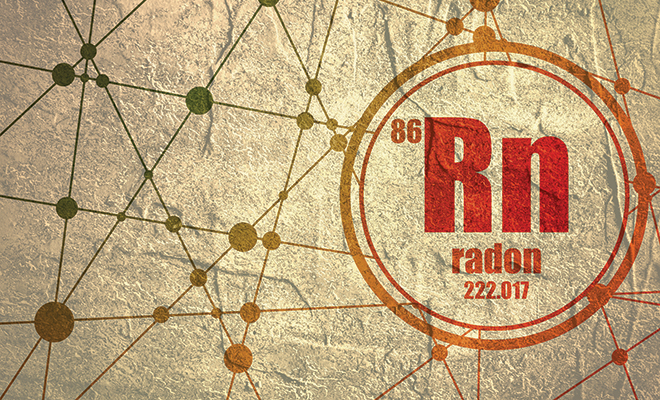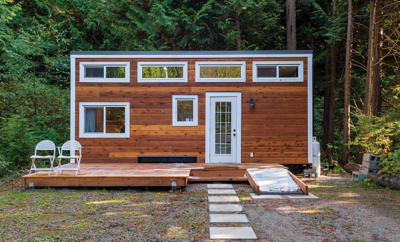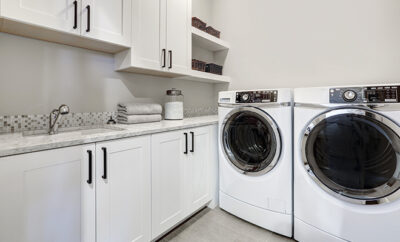
Radon: The Silent Killer
It’s colorless, odorless, deadly and may be in your home. Radon is a naturally occurring radioactive gas found in dangerous levels in one of every eight American homes. After tobacco smoking, exposure to elevated levels of radon is the second highest cause of lung cancer, causing up to 21,000 deaths a year. It may be in the air you breathe every day.
January is National Radon Action Month, a good time to consider your exposure. While radon contamination may be more common in some geographic regions, it has been found in all 50 states. Even if your next-door neighbor’s home is free of dangerous levels of radon, yours can still harbor high levels.
Scientists such as Andy George had spent a decade measuring levels of radon in uranium mines while with the Atomic Energy Commission, now the EPA. Then, in the 1960s, he says, they discovered that radon was seemingly everywhere. “We began to look at contaminated soil and the soil under houses. There is no house without radon since soil contains uranium.”
The natural decay of uranium in deep soil creates radon gas, which moves upward, entering homes through tiny cracks in the foundation, spaces around pipes, air vents, fireplaces and furnaces, getting trapped in the lowest levels of homes. Radon is measured in picoCuries per liter of air, or pCi/L. “The level in the average home is 1.3 picoCuries,” says George, now a consulting quality assurance officer with the Radon Testing Corporation of America. “Anything above 4 pCi/L is dangerous.”
How do you know if your home is safe? Experts say that the first step is radon testing. Do-it-yourself kits are inexpensive and available in most hardware stores. One testing kit measures radon levels for a short period, usually a few days and allows homeowners to collect air quality samples to send to a laboratory for analysis.
These kits need to be located in the lowest level of the home, usually a basement, but not in areas with high levels of moisture such as laundry rooms or bathrooms. Generally, cooler seasons, when windows are closed, are the best time for testing. The test kits must remain in place for at least 48 hours and should be sent as soon as possible to the lab. Charcoal-based kits are one popular testing method; a more accurate reading can be achieved if two are placed side by side. Long-term test kits that can remain in place for 90 or more days can more accurately measure fluctuating radon levels than short-term kits, but either can determine if a home will need to hire a mitigation expert to permanently lower the radon to a safe level.
If the level of radon in the home is already at a safe level, little needs to be done, although redoing the test every few years is recommended. But if levels are elevated, homeowners need to hire a professional who is experienced in eliminating radon from homes.
The solutions to a radon problem can differ depending on the type of construction and the age and size of the home, the local climate and local or state ordinances. Many newer homes were built to be radon-resistant. Older homes can be made safer with some simple changes. But all homes can be fixed, says Mike Broumeester, owner of Radon Associates, a Wisconsin-based radon mitigation company. On average, costs for mitigation systems range from $800 to $1,500 nationally.
Broumeester, who has been focusing on ridding homes of radon gas in the upper Midwest for the last six years, says that while each house is different, some of the most common solutions include digging a small hole in the basement foundation, installing a pipe from the foundation to the roof and, using a fan, drawing radon-containing air from soil under the home up and out of the house. If the house has an attached garage, the piping can often be placed there. “We go to every house to see the best routing,” he says. “We find ways to route the piping, based on where we need to place the fan. Sometimes we need to route a pipe outside the house. Sometimes we go through the attic and cut a small hole and vent out the roof. Once vented, it’s safe.”
Many states have websites that list certified contractors. Homeowners should look for a national certification from the National Radon Proficiency Program or the National Radon Safety Board.
While Broumeester has passed national certification to measure and to mitigate homes with elevated radon levels, he warns consumers that the rules for mitigation contractors differ from state to state. Some states have strict requirements for mitigators, including state licensing. Others have none. “So, do your research. Make sure you choose a contractor with specific experience with this problem,” he says. ■
Sources: aarst-nrpp.com, homeadvisor.com and idph.iowa.gov.







